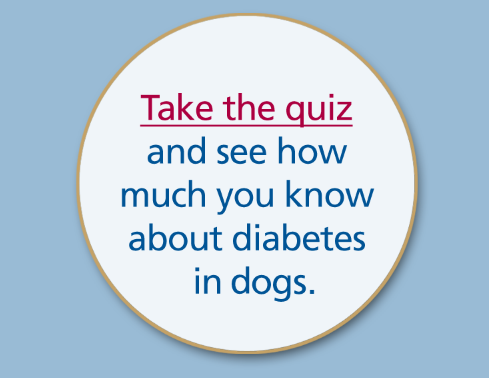Diabetes in Dogs
Diagnosis and detection
Diabetes is one of many conditions that can affect your dog and cause visible changes in behavior and other signs. That’s why it is important that your dog be thoroughly examined by a veterinarian at least once a year or more frequently, if your veterinarian advises.
Knowing the signs of diabetes is the first step in protecting your dog’s health. If any of these statements describes your pet, speak with your veterinarian about the possibility of diabetes:
- Drinks more water than usual (polydipsia)
- Urinates more frequently, produces more urine per day, or has “accidents” in the house (polyuria)
- Always acts hungry (polyphagia), but maintains or loses weight
- Has cloudy eyes
When evaluating your dog for diabetes, your veterinarian may ask about these signs and will check your dog’s general health to rule out the possibility of other conditions or infections. In addition, your veterinarian will test your dog’s urine for the presence of glucose and ketones and, if indicated, will then measure your dog’s blood glucose concentration. A diagnosis of diabetes only becomes definite when glucose is found in the urine and at a persistently high concentration in the blood.



